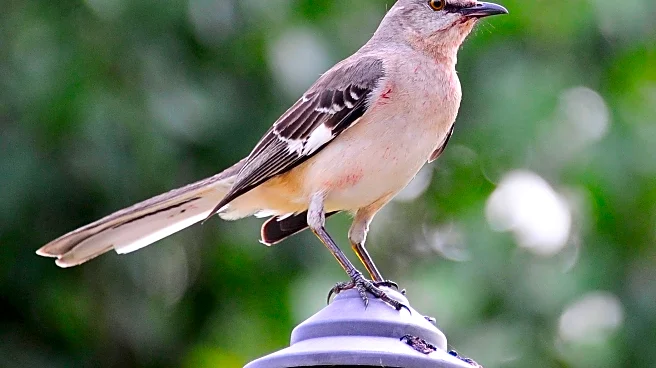Rapid Read • 8 min read
AI-driven nature apps are transforming the way people engage with wildlife during hikes. The Merlin Bird ID app, developed by the Cornell Lab of Ornithology, uses artificial intelligence to identify bird species by analyzing live sound recordings from users' phones. This technology has made birdwatching more accessible and engaging, attracting a younger demographic who share their experiences on social media platforms like TikTok and Instagram. The app's manager, Drew Weber, notes a shift from traditional birdwatchers to a broader audience, including 20- and 30-year-olds. The app's ability to detect birds like the scarlet tanager and tufted titmouse has sparked interest among users, including public figures like Seattle Seahawks quarterback Sam Darnold. Despite occasional inaccuracies, such as confusing mockingbird sounds, the app provides a unique, interactive experience akin to a real-world version of Pokémon Go.
AD
The integration of AI in nature apps like Merlin and iNaturalist is significant for conservation efforts and biodiversity research. These apps not only enhance user engagement with nature but also contribute valuable data for scientific studies. As animal extinctions and biodiversity loss accelerate globally, the observations submitted by users help in conservation research. The community aspect of these apps fosters a sense of stewardship among users, encouraging them to learn and share knowledge about nature. This democratization of wildlife observation can lead to increased awareness and action towards environmental conservation, making it a crucial tool in the fight against biodiversity loss.
The continued development and refinement of AI technology in nature apps could lead to more accurate identifications and broader applications in conservation research. As more users engage with these apps, the data collected can provide insights into wildlife patterns and help track invasive species, such as the spotted lanternfly. The expansion of these apps to include more features and species could further enhance user experience and contribute to global conservation efforts. Additionally, the growing community of nature enthusiasts may drive further innovation and collaboration in the field of citizen science.
The rise of AI nature apps highlights the intersection of technology and environmental stewardship. These tools not only offer recreational benefits but also serve as educational platforms, promoting a deeper understanding of ecosystems. The ethical implications of AI in wildlife observation, such as privacy concerns and data accuracy, warrant consideration as these technologies evolve. Furthermore, the cultural shift towards digital engagement with nature may influence traditional practices and perceptions of wildlife observation.
AD
More Stories You Might Enjoy














